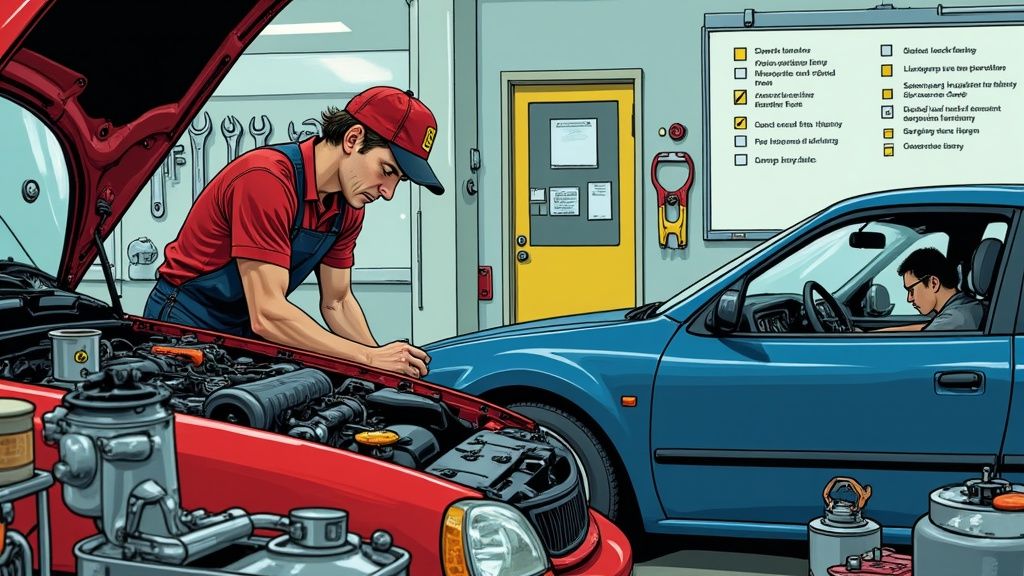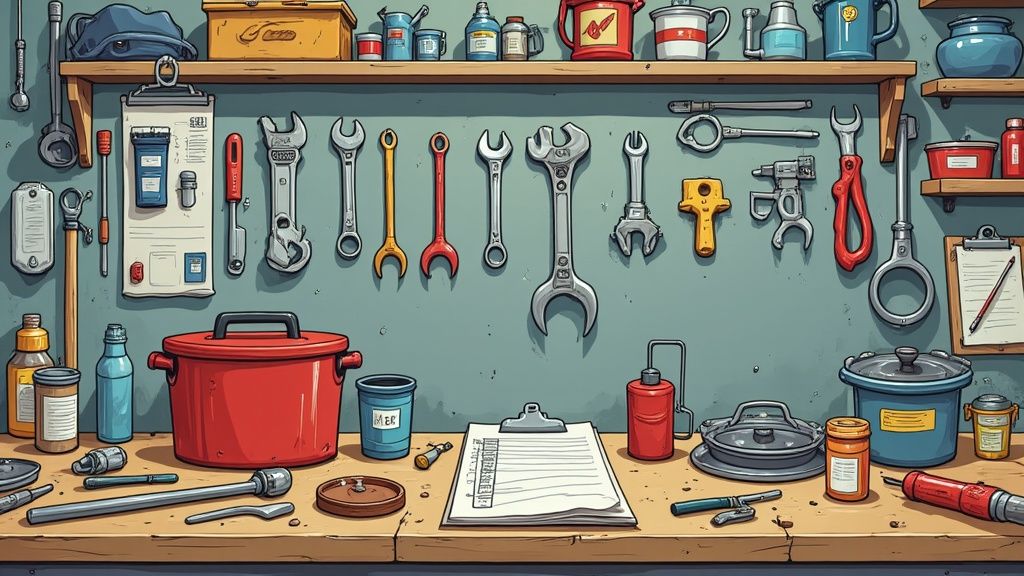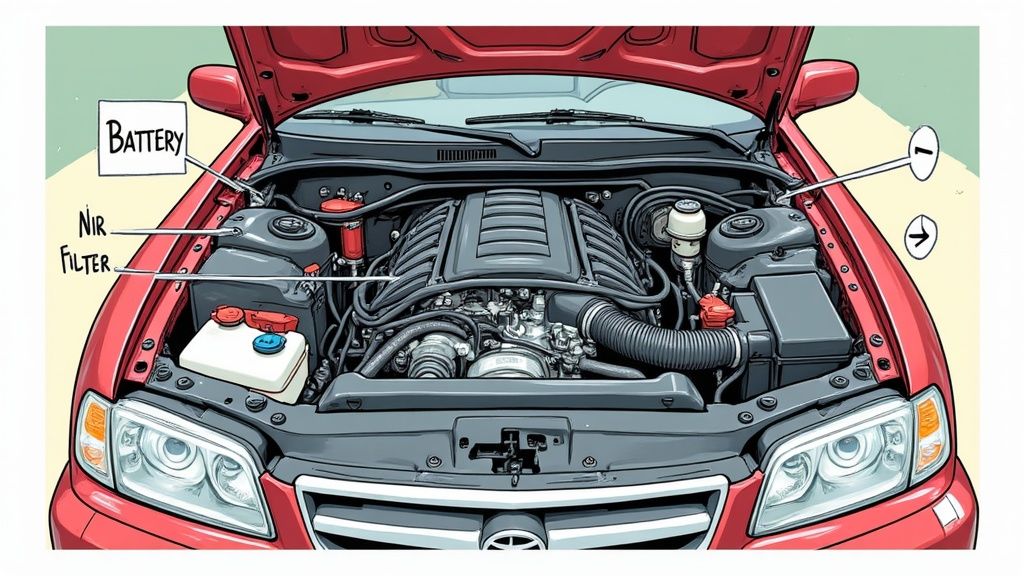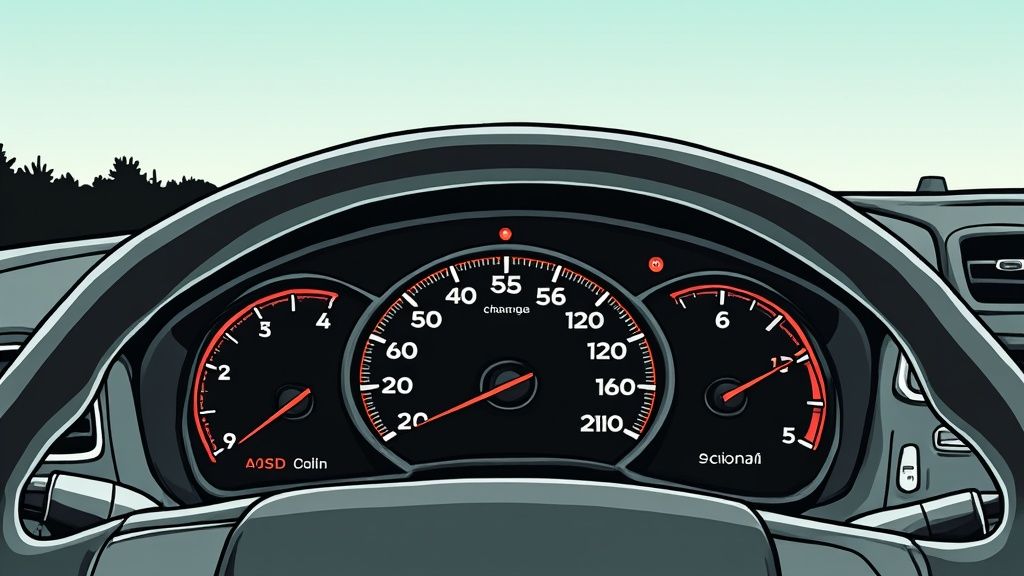
Ultimate DIY Car Maintenance Checklist: The Complete Workshop Manual for Smart Vehicle Owners
Why DIY Car Maintenance Is Your Smartest Investment

When people think about maintaining their own cars, saving money is often the first benefit that comes to mind. But doing your own maintenance offers much more than just cost savings. Taking care of your vehicle yourself helps you understand how it works and builds valuable mechanical skills. Many car owners find a real sense of pride and accomplishment in handling their own repairs.
Financial Benefits: More Than Just Saving on Labor Costs
The math behind DIY car maintenance is compelling. A basic oil change at a shop typically costs $50 or more, while doing it yourself often runs less than $25. Regular DIY checks of tire pressure and fluid levels help prevent expensive problems down the road. For instance, driving on underinflated tires leads to faster wear and early replacement needs. Similarly, keeping an eye on fluid levels helps avoid serious engine damage that could result in major repair bills.
Personal Growth and Skill Development
Learning to work on your car builds practical mechanical knowledge and troubleshooting abilities. As you become familiar with different parts and systems, you’ll get better at identifying problems early. This knowledge helps you make smart decisions about repairs and reduces dependence on mechanics for minor issues. Successfully completing maintenance tasks builds confidence in your abilities to solve hands-on problems.
The Growing Trend of DIY Auto Care
The DIY car maintenance movement has gained significant momentum in recent years. Between 2017 and 2024, the DIY auto parts market grew by 59%, with a steady 5.96% annual growth rate. While the pandemic initially drove more people to DIY repairs, many have stuck with these habits even after shops reopened. The DIY segment now makes up about 19-20% of total auto parts sales. Read more details about this trend here.
Accessibility and Empowerment Through Modern Tools
Getting started with DIY car maintenance has never been easier. Clear online tutorials, active discussion forums, and affordable diagnostic tools put basic repairs within reach for most car owners. Using a DIY car maintenance checklist helps track essential tasks and stay organized. With professional repair costs continuing to rise, learning to handle basic maintenance yourself makes practical sense both for your wallet and your personal development.
Building Your Essential DIY Maintenance Toolkit

A proper toolkit makes car maintenance easier, safer and more efficient. You don’t need a professional mechanic’s complete setup - just the right selection of essential tools to handle basic maintenance tasks. Let’s explore how to build a practical toolkit that gives you what you need without breaking the bank.
Essential Hand Tools: The Foundation of Your Kit
The core of any DIY mechanic’s toolkit consists of quality hand tools that you’ll use for nearly every maintenance job. Here are the must-have basics:
- Wrenches: Get a set of combination wrenches (open-end and box-end) in both metric and standard sizes
- Sockets and Ratchet: Purchase a good socket set that includes various sizes and extensions
- Screwdrivers: Keep Phillips head, flathead, and Torx options on hand
- Pliers: Include needle-nose, slip-joint, and locking pliers for gripping and manipulating parts
Diagnostic and Specialized Tools
As you tackle more complex jobs, these tools help identify and fix problems:
- OBD2 Scanner: Read diagnostic codes from your car’s computer with an affordable handheld scanner
- Multimeter: Test voltage, current, and resistance to diagnose electrical issues
- Tire Pressure Gauge: Get accurate pressure readings with a dedicated gauge rather than relying on gas station tools
Organization and Safety: Essential Considerations
Store your tools in a compartmentalized toolbox or wall-mounted organizer to save time looking for what you need. Never skip safety gear - wear protective glasses and gloves when working on your car to guard against debris, chemicals and sharp edges. Make sure you have proper ventilation, especially when handling fluids or working in enclosed spaces.
Quality vs. Cost: Finding the Right Balance
While premium tools are nice, start with good quality budget-friendly options. Many reliable tools are available at reasonable prices. Build your DIY car maintenance checklist and get tools as you need them for specific jobs. You can upgrade frequently-used tools later on. Remember that consistent maintenance with basic tools beats having expensive tools that rarely get used.
Monthly Maintenance Mastery: Your Core Checklist
Your car’s health and longevity depend on consistent monthly inspections and maintenance. Learning how to check a few key systems helps catch problems early before they become expensive repairs.
Fluid Checks: The Lifeblood of Your Vehicle
Your car needs proper fluid levels to run smoothly. Make time each month to check the engine oil, coolant, brake fluid, power steering fluid, and transmission fluid. Low engine oil leads to increased wear, while low brake fluid affects stopping power. Always check your owner’s manual for the right fluid types and recommended levels for your specific model.
Tire Inspection: Ensuring a Smooth and Safe Ride
Since tires are your only contact with the road, checking them monthly is critical for safety. Use a quality tire pressure gauge - underinflated tires waste fuel and risk blowouts, while overinflated tires wear unevenly. Look for cuts, bulges and objects stuck in the tread. Plan to rotate tires every 5,000-7,000 miles for even wear.
Lights and Electrical System: Staying Visible and Connected
Take a few minutes each month to test all your lights - headlights, taillights, brake lights, turn signals, and hazards. Check wiring for damage. Lighting problems can quickly escalate from dim bulbs to full system failures. Research shows 71% of DIY mechanics handle their own lighting maintenance versus taking it to a shop. Learn more about DIY trends here.
Air Filter: Breathing Easy for Optimal Performance
Your engine needs clean air to perform well. A dirty air filter restricts airflow, reducing efficiency and power. Check your filter monthly and replace it every 12,000-15,000 miles, or more often in dusty areas. This simple task helps fuel economy and protects your engine.
Wiper Blades: Maintaining Clear Visibility
Don’t overlook your wipers until you need them. Look for streaking, skipping, or cracked rubber during your monthly checks. Replace worn blades right away to maintain clear vision in bad weather. Good wipers are essential for safe driving.
Documenting Your Maintenance: Keeping a Detailed Record
Track all maintenance in a DIY car maintenance checklist. Good records help diagnose issues and prove service history when selling. Use a notebook, spreadsheet, or try Auto Service Logger to track mileage, save documents, and generate reports. Consistent documentation helps you stay on top of maintenance needs and boosts resale value.
Seasonal Maintenance Strategies: Protecting Your Investment Year-Round

Your car needs different care as the seasons change. Setting up a seasonal maintenance schedule helps protect your vehicle from weather damage and keeps it running smoothly all year. Taking care of issues early also prevents bigger repair bills later.
Winterizing Your Vehicle: Battling the Cold
The cold months create special challenges for cars. Your battery works extra hard in freezing temperatures, so check its charge and connections regularly. Use winter-grade oil to help your engine start better in cold weather. Make sure your tires have good tread depth and proper inflation - this is crucial for safe winter driving. Good winter prep helps your car last longer.
Summer Care: Keeping Cool Under Pressure
Hot weather tests your car’s cooling system. High temperatures can make coolant evaporate and cause overheating. Check coolant levels and condition often during summer months. Look for wear on belts and hoses since heat can damage them faster. Just as humans need more water in summer, your car needs proper fluid levels too.
Spring Revival: Refreshing Your Ride After Winter
Spring is an ideal time to fix winter’s damage to your car. Give it a thorough wash to remove corrosive road salt and grime from underneath. Check brakes and suspension parts for winter wear. Think of spring as your car’s fresh start - getting ready for better driving weather ahead.
Fall Preparation: Gearing Up for the Coming Cold
As temperatures drop, prepare your car for winter. Test your heating system to ensure it works well. Replace worn wiper blades and top off washer fluid before rain and snow arrive. Get your tires rotated and balanced now. Good fall maintenance sets your car up for winter success.
Planning Your Seasonal Maintenance: A DIY Approach
Make a DIY car maintenance checklist for each season to stay organized. Keep records using a logbook, spreadsheet, or Auto Service Logger to track maintenance and mileage. Focus on the most important tasks based on your local weather and driving needs. If you get heavy snow, winterizing becomes extra important. Good planning keeps your car reliable in all seasons.
Advanced DIY Projects: Taking Your Skills to the Next Level
Once you’re comfortable with basic car maintenance tasks, you can start saving money by tackling more advanced projects yourself. Many complex repairs that command high prices at shops can be done at home with the right knowledge and preparation.
Brake Service: Stopping Power Under Your Control
A complete brake service improves your vehicle’s safety and performance. This job involves checking and replacing brake pads, rotors, and calipers. Before starting, gather essential tools like jack stands, a lug wrench, and caliper bolt wrenches. Always check your service manual for torque specs. One key safety tip: open the bleeder screw before compressing the caliper piston to prevent damage to the brake system.
Timing Belt Replacement: Keeping Your Engine in Sync
The timing belt coordinates your engine’s moving parts for smooth operation. This job requires precision and special tools like a timing belt alignment tool and crankshaft pulley holder. Double-check all timing marks before completing the installation - mistakes here can cause serious engine damage. With careful preparation and attention to detail, you can handle this critical maintenance task.
Suspension Work: A Smooth Ride Starts Here
Your car’s suspension affects both comfort and handling. Common issues include worn shocks, struts, and control arm bushings. Listen for clunking over bumps (often bad bushings) or excessive bouncing (worn shocks/struts). Use extreme caution with spring compressors during strut replacement - this tool can be dangerous if used incorrectly. Follow your manual’s safety procedures carefully.
Other Advanced Projects and Safety First
With practice, you can tackle other complex jobs like water pump or alternator replacement. But safety must always be your top priority. Before starting any advanced repair:
- Gather all required tools and parts
- Review the full procedure in your manual
- Know your skill limits - don’t hesitate to get help
- Document your work with Auto Service Logger
Never rush or take shortcuts with car repairs. A careful, methodical approach helps ensure success and safety.
Professional-Grade Troubleshooting Techniques

Good troubleshooting starts with paying attention to your car’s signals. By learning to spot early warning signs, you can catch small problems before they become expensive repairs. Here’s how to approach car problems systematically and effectively.
Interpreting Warning Lights and Sounds
Your car communicates through dashboard lights and various noises. Learn to distinguish between urgent warnings (like a flashing check engine light that needs immediate attention) and less critical alerts (like a steady check engine light). Pay attention to sounds - grinding brakes, engine knocking, or unusual squeals all tell different stories about potential issues.
Performance Changes: Recognizing the Subtle Signs
Watch for changes in how your car drives and performs. Poor fuel economy, weak acceleration, or starting problems can reveal underlying issues. Make it a habit to notice these small changes during your daily drives - they’re just as important as following your DIY car maintenance checklist. Regular attention to your car’s behavior helps catch problems early.
Using Diagnostic Tools and Inspection Techniques
While an OBD2 scanner gives you data about your car’s systems, basic inspection skills remain essential. Check fluid levels regularly, look at belt conditions, and monitor tire wear patterns. These hands-on checks, combined with scanner data, give you a complete picture of your car’s health. Keep detailed records of all maintenance - they help identify patterns and prevent issues from recurring.
Knowing Your Limits: When to Seek Professional Help
DIY repairs can save money, but some jobs need professional expertise. Complex electrical work, transmission repairs, and major engine repairs often require special tools and training. Attempting these without proper knowledge risks causing more damage. Document your troubleshooting steps with Auto Service Logger - this information helps mechanics diagnose problems faster and more accurately.
Keep track of all your car’s maintenance history with Auto Service Logger. Get a lifetime membership today for complete digital records of your vehicle’s service history. Visit Auto Service Logger to get started.